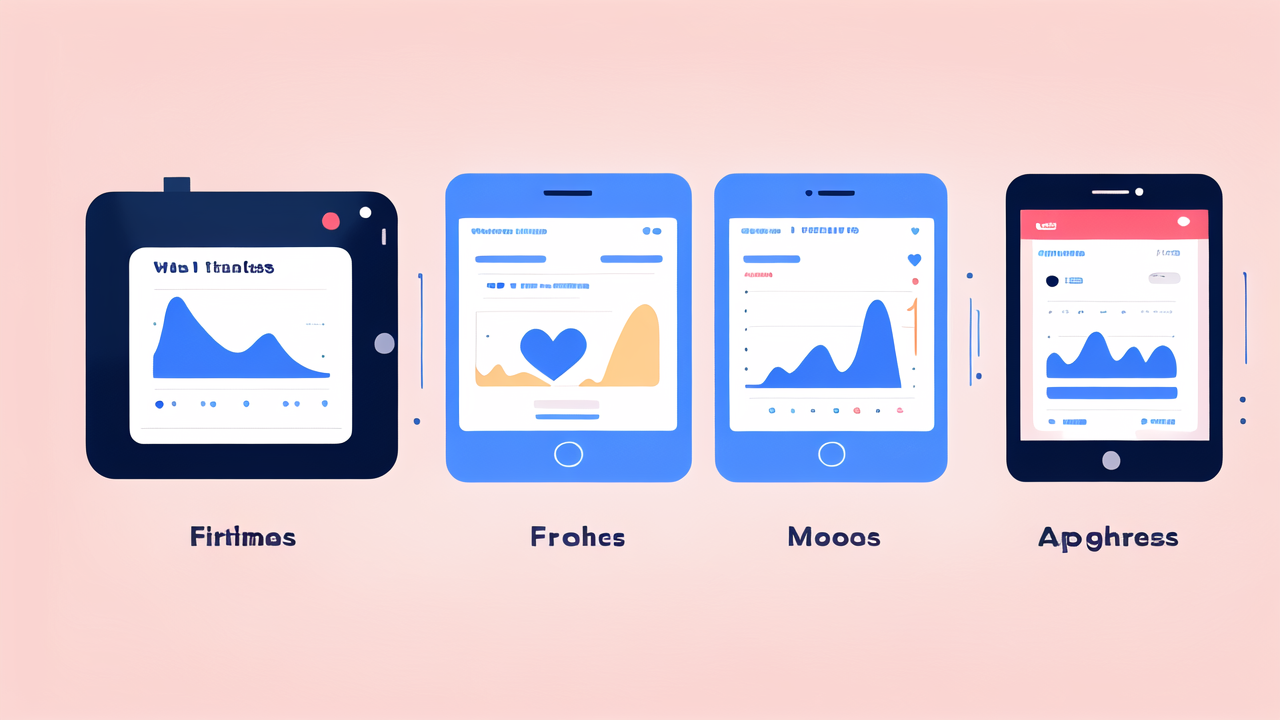Understanding the Technology Behind Smart Watch Health Features
The Evolution of Wearable Fitness Technology
Wearable fitness tech has come a long way. It started with simple step counters. Now, we have smart watches that do much more. These devices track our health in ways we never thought possible.

Early fitness trackers were basic. They counted steps and estimated calories burned. But they weren't very accurate. As tech improved, so did these devices. They started to include heart rate monitors and GPS.
Today's smart watches are like mini health labs on our wrists. They can track sleep, stress levels, and even blood oxygen. Some can even detect falls or irregular heart rhythms. This evolution has made health tracking more accessible to everyone.
The rise of smartphones played a big role in this growth. It allowed for easy data sync and analysis. Apps made it simple to view and understand health data. This convenience helped popularize wearable fitness tech.
Innovations in Smart Watch Sensors and Processors
Smart watches use various sensors to track health data. The most common is the accelerometer. It measures movement and helps count steps. Gyroscopes detect orientation, useful for exercises like yoga.
Optical heart rate sensors use LED lights to measure blood flow. This allows for continuous heart rate monitoring. Some watches now have ECG sensors too. These can detect heart rhythm irregularities.
GPS chips in smart watches track location and speed during outdoor activities. Altimeters measure elevation changes. This is great for hikers and cyclists. Some watches even have temperature sensors to track body heat.
Processors in smart watches have become more powerful. They can handle complex calculations quickly. This allows for real-time data analysis. It also enables features like sleep tracking and stress monitoring.
Battery life has improved too. Many smart watches can now last several days on a single charge. This is crucial for continuous health monitoring. Some use low-power modes to extend battery life even further.
Interpreting Data: From Raw Measurements to Actionable Insights
Smart watches collect a lot of raw data. But this data alone isn't very useful. The real magic happens when it's turned into actionable insights. This is where algorithms and AI come in.
Step counts are straightforward. But other metrics need more interpretation. For example, heart rate variability can indicate stress levels. Sleep data can show sleep quality and patterns. These insights help users make informed decisions about their health.
Many smart watches now offer personalized recommendations. They might suggest when to move more or when to rest. Some can even detect signs of possible health issues. This early warning can be invaluable.
Data visualization is key in making health data understandable. Apps use graphs and charts to show trends over time. This helps users spot patterns in their health and fitness. It can motivate them to make positive changes.
Smart watches often sync with other devices and apps. This creates a more complete picture of one's health. For example, combining activity data with diet tracking can aid in weight management.
Regulatory Insights: How Smart Watches are Shaping Health Monitoring in the US
The FDA and Wearable Technology: Ensuring Accuracy and Safety
The FDA plays a crucial role in regulating health features in smart watches. They ensure these devices are safe and accurate. This is especially important for features that claim to detect medical conditions.

Not all smart watch health features need FDA approval. Basic fitness tracking doesn't require it. But features like ECG or blood oxygen monitoring do. The FDA reviews data from clinical trials before approving such features.
The FDA has created a new category for digital health products. It's called "Software as a Medical Device" (SaMD). Many smart watch health features fall under this category. This helps streamline the approval process for these technologies.
The FDA also monitors approved devices after they're on the market. They collect data on any issues or inaccuracies. This helps ensure ongoing safety and effectiveness. It also guides future regulations and approvals.
Smart watch makers must be clear about what their devices can and can't do. They can't claim medical benefits without FDA approval. This protects consumers from misleading health claims.
Health Privacy and Regulations in the Digital Age
Health data from smart watches is very personal. Protecting this data is crucial. In the US, HIPAA laws govern health information privacy. But these laws don't always apply to data from smart watches.
Most smart watch data isn't considered protected health information under HIPAA. This is because users, not healthcare providers, collect it. However, other privacy laws may apply. The FTC enforces privacy policies of tech companies.
Smart watch makers must be transparent about data collection and use. Their privacy policies should clearly state what data they collect and why. Users should have control over their data. This includes the ability to delete it.
Some states have their own data privacy laws. California's CCPA, for example, gives consumers more control over their personal data. This affects how smart watch companies handle data for California residents.
There's ongoing debate about strengthening health data privacy laws. This could lead to new regulations for smart watch health data. The goal is to protect user privacy while still allowing for innovation.
Compliance and Certification for Smart Watch Health Features
Smart watch makers must meet various standards to sell their products. This includes FCC certification for wireless devices. It also includes safety standards for wearable electronics.
For health features, additional certifications may be needed. ISO 13485 is a standard for medical devices. Some smart watch makers get this certification for their health tracking features.
Accuracy is key for health monitoring features. Many companies have their devices tested by third parties. This helps prove the accuracy of their measurements. It can also support claims made in marketing materials.
Some countries have their own certification requirements. In Europe, the CE mark is needed for medical devices. Smart watches with certain health features may need this mark to be sold there.
Compliance isn't just about meeting standards. It's also about ongoing quality control. Companies must have systems in place to monitor and improve their products. This helps maintain accuracy and safety over time.
The Future of Smart Watches in Healthcare: Trends and Predictions
Advancing AI and Machine Learning in Wearable Devices
AI and machine learning are set to revolutionize smart watches. These technologies can analyze vast amounts of health data. They can spot patterns that humans might miss. This could lead to earlier detection of health issues.

Future smart watches may be able to predict health events before they happen. For example, they might warn of an impending heart attack or stroke. This could save lives by allowing for early intervention.
AI could also make health recommendations more personalized. It could learn a user's habits and health patterns. Then it could suggest tailored lifestyle changes for better health outcomes.
Machine learning could improve the accuracy of existing features. It could adapt to individual users over time. This would make measurements like heart rate and sleep tracking even more precise.
We might see smart watches that can diagnose common conditions. They could use a combination of sensors and AI analysis. This could help reduce the burden on healthcare systems.
The Integration of Smart Watches with Healthcare Systems
Smart watches are becoming more integrated with formal healthcare. Some doctors already use data from these devices to monitor patients. This trend is likely to grow.
In the future, smart watches might connect directly to electronic health records. This would give doctors real-time access to patient health data. It could help with early detection of health issues.
Telemedicine could benefit greatly from smart watch integration. Doctors could get vital signs and other data during video consultations. This could make remote healthcare more effective.
Smart watches could play a big role in managing chronic conditions. They could help monitor symptoms and medication adherence. This could improve outcomes for conditions like diabetes and heart disease.
We might see more specialized smart watches for specific health conditions. These could have sensors tailored to monitor particular diseases. They could provide more detailed data for those conditions.
Ethical Considerations and the Responsible Use of Wearable Data
As smart watches collect more health data, ethical questions arise. Who owns this data? How should it be used? These are complex issues that need careful consideration.
There's a risk of discrimination based on health data. Insurance companies might want access to this information. This could lead to higher premiums for some people. Regulations may be needed to prevent unfair practices.
Privacy concerns will likely grow as these devices become more advanced. Users need to trust that their sensitive health data is secure. Companies must prioritize data protection and transparency.
The accuracy of health data from smart watches is crucial. False alarms could cause unnecessary stress. Missed warning signs could be dangerous. Ensuring reliability is an ongoing ethical responsibility.
There's also the question of digital divide in healthcare. Not everyone can afford or use smart watches. We need to ensure that these technologies don't widen health inequalities.
As smart watches become more integrated with healthcare, clear guidelines will be needed. These should cover data use, privacy, and the role of these devices in medical decisions. Balancing innovation with ethical concerns will be key.




Leave a comment
This site is protected by hCaptcha and the hCaptcha Privacy Policy and Terms of Service apply.